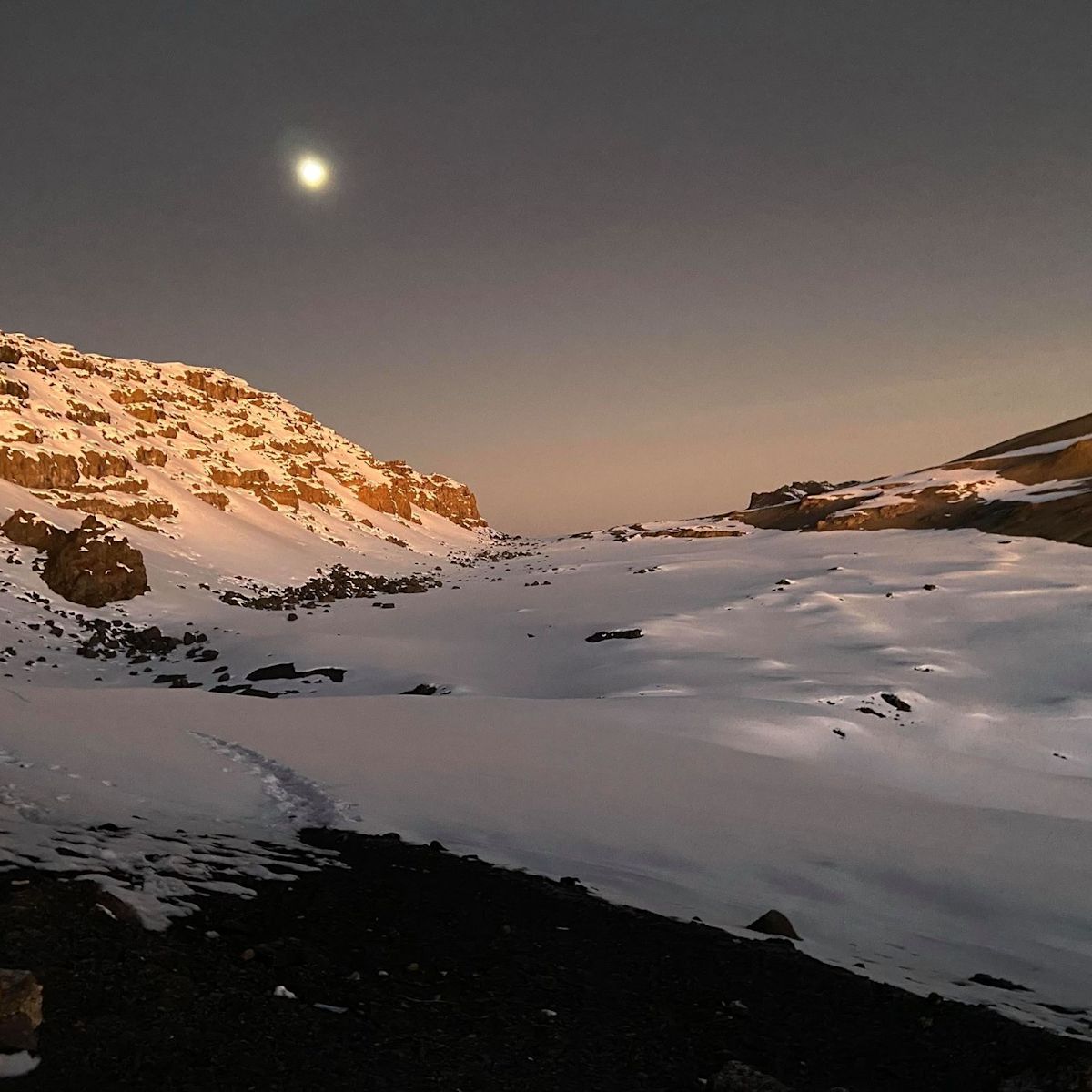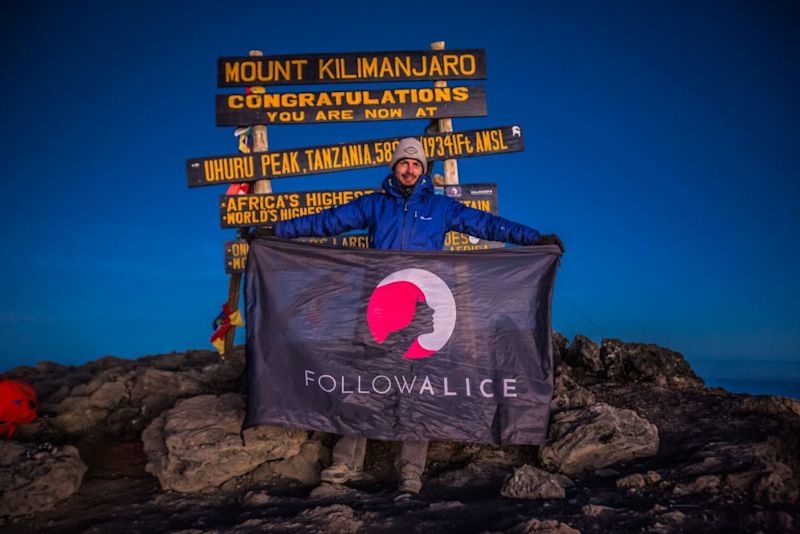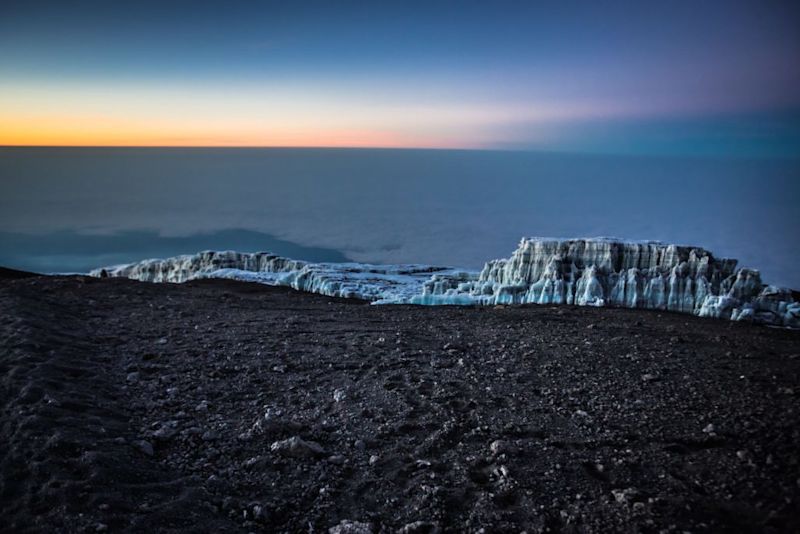Did you know that no matter which of the seven Kilimanjaro routes you choose, on summit ‘day’ you actually start your ascent to the peak at midnight? Yup, that’s right. Get ready to wake up nice and early to some tea and biscuits. Switch on your head torch. Then climb your way into the dark night over stone scree to reach the top just in time for sunrise. Many describe this part of the climb – the summit attempt – as the most mentally and physically challenging part of the whole experience when they climb Kilimanjaro.
If you're lucky enough to be making the journey to Tanzania's Kilimanjaro whilst there is a full moon in play, then you're in for a treat! If you thought your Kilimanjaro climb couldn’t get any more beautiful, then listen to this ...
I climbed Kilimanjaro during the full moon and it was truly amazing! The views were second to none.
– Sarah Johnson
Feel like standing on the Roof of Africa under a full moon?
Why are full moon climbs so popular?
Firstly, you’ll be accompanied and guided in your night-time trek by the bright light of the full moon. It illuminates your six-hour journey up to Uhuru Peak, making the glaciers glitter and the rolling clouds below you glow. The moonlight also makes the earth beneath your feet glisten. Sounds like a dream, right?
Secondly, a practical reason for climbing during a full moon is that its brightness (when paired with a clear sky) improves visibility throughout your Kilimanjaro trek, especially during your summit attempt.
Thirdly, climbing Kilimanjaro during a full moon offers you magnificent night views of Kibo from most of the overnight camps.
So to summarise, a full moon offers:
- Stunning views
- Improved visibility during summit attempt
- Views of Kibo from most camps
A full moon therefore makes what's already a very special trip just that little bit more special. The full moon is widely considered one of the best times in the month to climb Kilimanjaro. As to which month is the best month to climb? Read more about The best time to climb Kilimanjaro.
Glittering glaciers
One of the key geographic features of Mount Kilimanjaro (and part of what makes it so unique) is its crowns of ice glaciers.
These glaciers used to be more than 100 m (300 feet) deep and extend for 2 km (1.2 miles) from the mountaintop. Due to the effects of global warming and long-term climatic cycles, however, the ice has been thinning from the top down at a very alarming rate. Some scientists estimate that Kilimanjaro’s ice cap will be completely gone by 2050. So if you're thinking about undertaking this epic climb, do yourself a favour and do it sooner rather than later. The glaciers are definitely not something you want to miss!
See the beautiful ice glaciers at the top of Kilimanjaro under moonlight
Full moon dates for 2025
If you would like to experience a full moon whilst on your Kilimanjaro climb, then please chat to us about when to plan your trip.
Also, note that the 2025 dates provided below are best estimates as per reputable weather forecasting websites. You may find different dates across different Kilimanjaro operator websites. Therefore please don't rely on this data as gospel. We recommend you double-check dates on weather websites such as timeanddate.com.
2025 full moon dates
- 14 January
- 12 February
- 14 March
- 13 April
- 12 May
- 11 June
- 10 July
- 9 August
- 7 September
- 7 October
- 5 November
- 5 December
A Kilimanjaro full moon climb is always better with friends!
The only downside ...
There had to be one!
Because of how wonderful a Kilimanjaro full moon climb is, many people organise their treks around these dates. That means if you plant to summit the mountain during a full moon, you'll be doing so with plenty of company.
If you'd prefer a less crowded trek, then we recommend avoiding the full moon dates. Or, alternatively, let us arrange your trek dates so that you summit the day before or after the full moon. The effect and experience of the full moon generally remains the same one day on either side.






